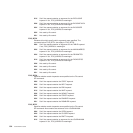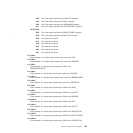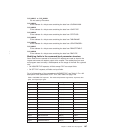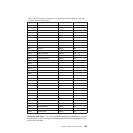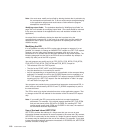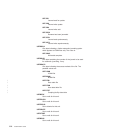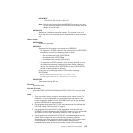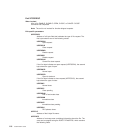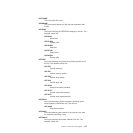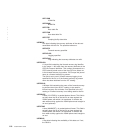For a CLOSE WAIT command, the exits are invoked as follows. XFCSREQ is
invoked, the task requests a closure of the file and waits for the closure to happen.
When all activity against the file is complete, the file is closed, and XFCSREQ and
XFCSREQC are invoked under the task that closed it. Finally, because the closure
has now been completed, the task that issued the CLOSE WAIT is resumed,
completes its CLOSE request, and invokes XFCSREQC.
A CANCEL CLOSE request is issued by CICS in response to an UNQUIESCE
command that cancels a pending QUIESCE command. A QUIESCE data set
command immediately sets all files opened against the specified data set as
unenabled, to prevent new tasks being allowed access to the data set. The close
part of the operation, however, waits until the last user task finishes before a file is
actually closed. (This is the same as any close operation against a file.) An
UNQUIESCE issued while the close is still waiting causes a CANCEL CLOSE
request and the invocation of the XFCSREQ and XFCSREQC exits. Note that a
CANCEL CLOSE is issued only for close requests that were initiated by a
QUIESCE command, not for any other close requests.
Note: There are two occasions when the user exits XFCSREQ and XFCSREQC
are not invoked during a close request:
1. On a controlled, non-immediate shutdown of CICS, when CICS closes all
files.
2. After loading a user maintained data table. When the data table load has
completed the source data set is no longer required. CICS subsequently
closes and de-allocates the file, leaving the data table open.
Exit XFCSREQ
When invoked
Before a file ENABLE, DISABLE, OPEN, CLOSE, or CANCEL CLOSE is
attempted.
Note: The exit is not invoked for function-shipped requests.
Exit-specific parameters
UEPFSREQ
Address of a 2-byte field that indicates the type of file request. The
first byte contains one of the following values:
UEPFSOPN
Open request
UEPFSCLS
Close request
UEPFSENB
Enable request
UEPFSDIS
Disable request
UEPFSCAN
Cancel close file request.
If the first byte indicates an open request (UEPFSOPN), the second
byte shows the type of open:
UEPFSNOP
Normal open
112 Customization Guide



